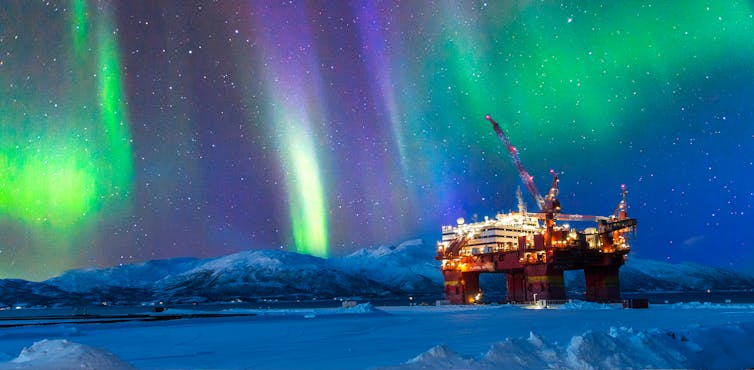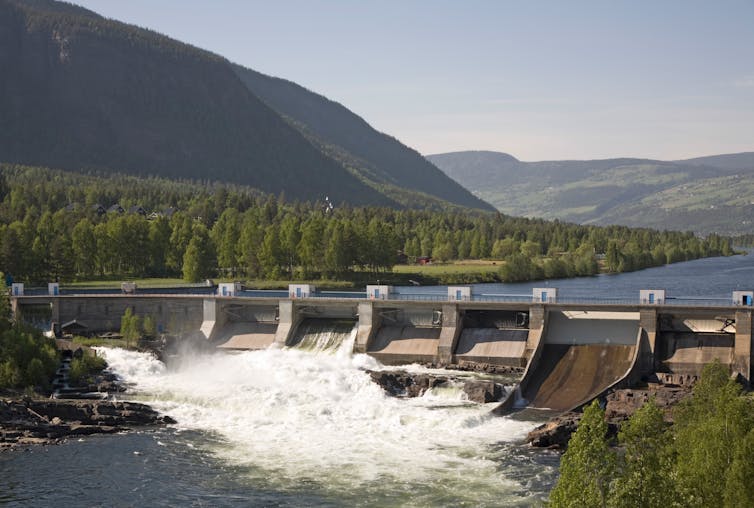
On 4–12 November 2020, the plenary of the Supreme Court will hear the so-called climate lawsuit between the above parties. The Norwegian Society for the Conservation of Nature and the Grandparents Climate Campaign have declared third-party intervention in favour of Nature and Youth Norway and Föreningen Greenpeace Norden (the environmental groups)
The case concerns the validity of an administrative decision of 10 June 2016 to grant production licenses on the Norwegian continental shelf in the south and southeast part of the Barents Sea – “the 23rd Round”. The environmental groups have asserted three different grounds for invalidity.
First, it is contended that the administrative decision is incompatible with Article 112 of the Constitution, as the environmental consequences must be considered so detrimental that the decision exceeds an absolute limit prescribed in Article 112. When considering this invalidity ground, the Supreme Court must decide on the enforceability of the right to a healthy environment under Article 112 as well as the substance to the rights and obligations under Article 112.
Second, the environmental groups contend that the decision violates the right to life in Article 2 of the European Convention on Human Rights and Article 93 of the Constitution, and the right to respect for family life in Article 8 of the Convention and Article 102 of the Constitution. One of the main issues at hand is the application of Articles 2 and 8 of the Convention to climate emissions.
Third, the groups contend that the three production licenses granted in the southeast part of the Barents Sea are invalid due to procedural errors. The environmental groups have submitted that the research work has been inadequate, both in relation to the preliminary decision to open the area for production and the later decision to grant the production licenses.
The environmental groups’ request that the decision be declared invalid in whole or in part did not prevail in the lower instances, see Oslo District Court’s judgment 4 January 2018 and Borgarting Court of Appeal’s judgment 12 January 2020.
The Supreme Court has received a total of six written submissions to highlight public interests in the case under section 15-8 of the Dispute Act, which will be included in the Supreme Court’s basis for decision-making. These are statements from the Norwegian National Human Rights Institution, UN Special Rapporteurs for Human Rights and the Environment and for Human Rights and Hazardous Substances and Wastes, the Allard K. Lowenstein International Human Rights Clinic of Yale Law School, Center for International Environmental Law, the Environmental Law Alliance Worldwide and the Climate Realists.
The hearing will be held by video link and be streamed by the press.
Photo: V. Belov / Shutterstock
Alexandru Gociu, Trinity College Dublin and Suryapratim Roy, Trinity College Dublin
Almost all of Norway’s electricity comes from hydropower and its domestic emissions are relatively low, meaning the country is often perceived as clean and sustainable. Yet this contrasts with the trillions it has accumulated from four decades of producing oil for export, increasing greenhouse gas emissions elsewhere. Norway is the seventh-largest exporter of emissions in the world, and its emissions from exported oil and gas are ten times greater than the country’s direct emissions.
This is known as the Norwegian paradox, and on November 4 2020 the country’s supreme court will hear a crucial case that will highlight the issue. Unlike other high-profile climate lawsuits in other jurisdictions that have required governments to take more action, this one focuses on whether the court can direct the government on what action to take – specifically, to stop issuing licenses for further oil exploitation.
[Historically, Norway has adopted a unique model of sustainable development by going slow on oil exploitation and using oil money to invest heavily in renewable energy.] [Bergensias marking; this is gloryfying exploitation history] This model is now under legal scrutiny from critics who say that oil exploration, especially in the Arctic, is wrongful under any circumstance, irrespective of Norway’s commitment to renewable energy and a resilient economy. Thus, while sustainable development, renewable energy, and climate targets are intuitively complementary goals, this case reveals that they may involve conflicting policies.

The case focuses on Article 112 of the Norwegian Constitution, which focuses on sustainability and protection of the environment. In 2014, the article was updated to introduce a duty of care on the government to provide a liveable environment for current and future generations. And in June 2016, Norway ratified the Paris Agreement – so far, so good. However, just a few days beforehand, Norway had also granted new licenses to explore for oil in the Barents Sea, off the country’s northern coast. This prompted an alliance of NGOs – Nature and Youth, Greenpeace, Friends of the Earth Norway, and Grandparents Climate – supported by various other scientists, citizens, and artists, to sue the Norwegian government in October 2016 over its Arctic oil exploration.
Read more:
Why Norway may open up spectacular Lofoten archipelago to oil and gas firms
In its judgment on the lawsuit, the Oslo district court assessed that Article 112 of the Constitution confers a fundamental right to a healthy environment. However, the court ruled against the petitioners because “emissions of CO₂ abroad from oil and gas exported from Norway are irrelevant when assessing whether the Decision [to permit further oil exploration] entails a violation of Article 112”. Further, after the Paris Agreement was signed, the parliament introduced review measures that enabled halting oil and gas activities if they conflicted with the Agreement. The court found such measures sufficient to meet Norway’s climate change goals.
In January 2020, Oslo’s court of appeal affirmed the district court’s ruling, as the petitioners could not establish that the new oil licenses would lead to Norway not complying with its targets. However, the appeals court judgment differed from the district court in observing that Article 112 applies even to emissions from exported oil and gas – the climate, after all, does not care if Norwegian oil is burned in Bergen or Birmingham.
On further appeal by the petitioners, the Supreme Court of Norway has decided to hear the case “in full”, so all the legal arguments, facts, and questions will be scrutinized once again.

The petitioners are encouraged by the Appeals Court’s interpretation of this provision as conferring rights but are unhappy with the margin of discretion the government has in fulfilling its duties. Here lies the most notable difficulty for the petitioners, namely to connect the very idea of licensing and oil drilling in the Arctic with infringing the right to a clean, productive, and diverse environment enshrined in Article 112. Further, Article 112 also elevates natural resources sustainability to a core constitutional principle. Given investments in renewable energy are facilitated by oil money, the conflict between sustainable development and climate policy is even found in constitutional law.
Norway has historically been a world leader in balancing sustainable energy policies and protection of the environment. At the start of its oil boom in the 1970s, it designed a “go slow” policy aimed to preserve independence from big oil companies, to shield the economy and reduce pollution. Meanwhile, oil revenues were channeled into a sovereign wealth fund. The supreme court will therefore have to deal with a collision between a system that aims for a gradual shift to renewables – backed by a strong oil-funded welfare system that helps provide political support – and a more radical approach aimed at stopping the exploration of Arctic oil altogether.

The case is important because it will inevitably address the complex relationship between development, renewable energy, and climate change. An affirmative ruling will set a new legal path to revoking exploration licenses based on emissions from exported oil. Even if the petitioners’ claims are denied, the case is likely to influence public debate on whether oil exploration should be a thing of the past.
Alexandru Gociu, PhD in Law Candidate, Trinity College Dublin and Suryapratim Roy, Assistant Professor of Regulatory Law, Trinity College Dublin
This article is republished from The Conversation under a Creative Commons license. Read the original article.




23 Comments
Pingback: The Norwegian Petrokrati - Bergensia
Pingback: ice casino
Pingback: sideline
Pingback: รถส่งน้ําประปาเชียงใหม่
Pingback: 8XBET OFFICIAL ทางเข้าเว็บตรงเล่นแทงบอลจากต่างประเทศชื่อดัง
Pingback: pglike
Pingback: rove brand
Pingback: sugar high gummies
Pingback: ที่มาของเว็บ howtogclub
Pingback: 2 mg klonopin
Pingback: สล็อตเกาหลี
Pingback: kc9
Pingback: a fantastic read
Pingback: bgame777
Pingback: http://click2connect.buzz/index.php?do=/public/forum/posts/id_2387/page_1/
Pingback: pg168
Pingback: Neptuxe เว็บนอกแท้ จากประเทศอเมริกา
Pingback: 2nd private university in diyala
Pingback: สั่งสินค้าจากจีน
Pingback: ดูแลผู้สูงอายุ
Pingback: Las Vegas SEO consultant
Pingback: Sweet Bonanza
Pingback: pg168